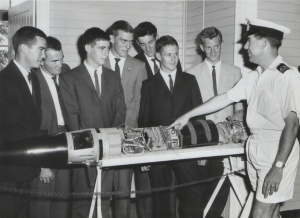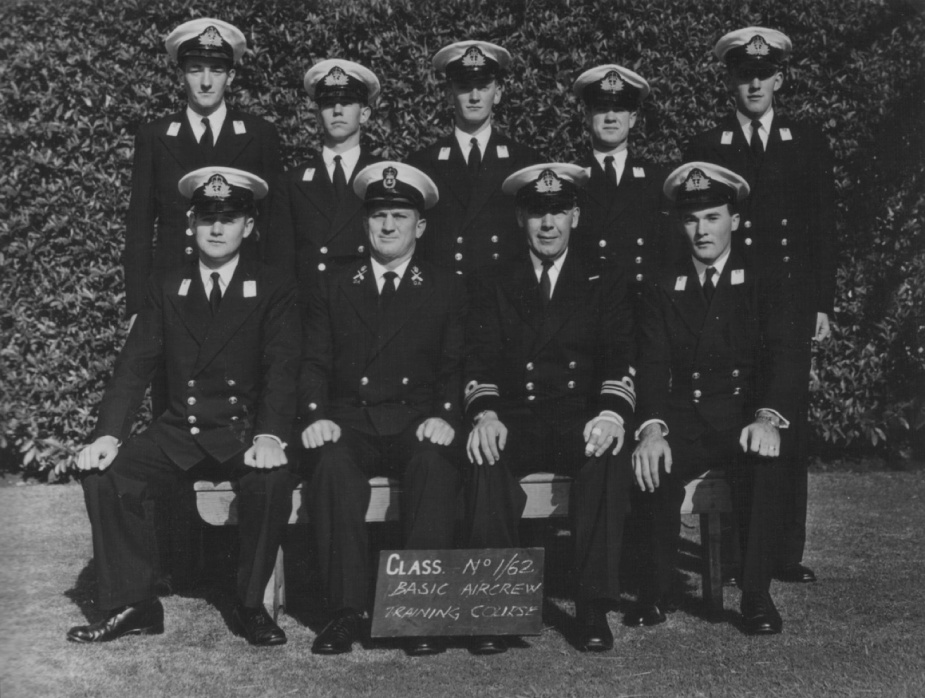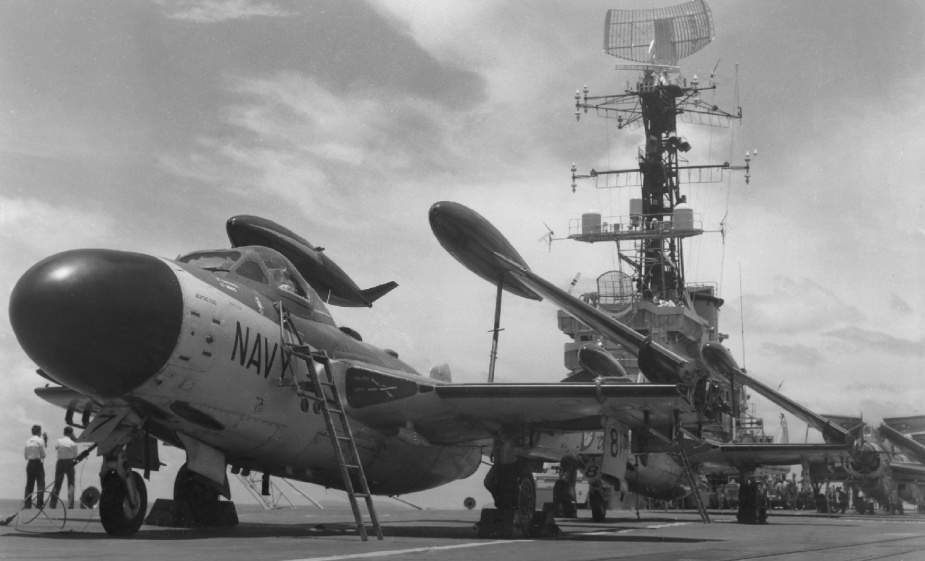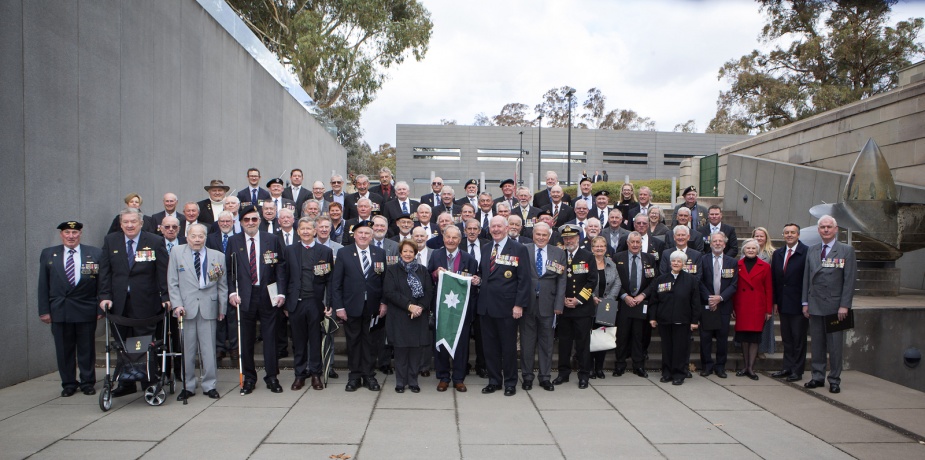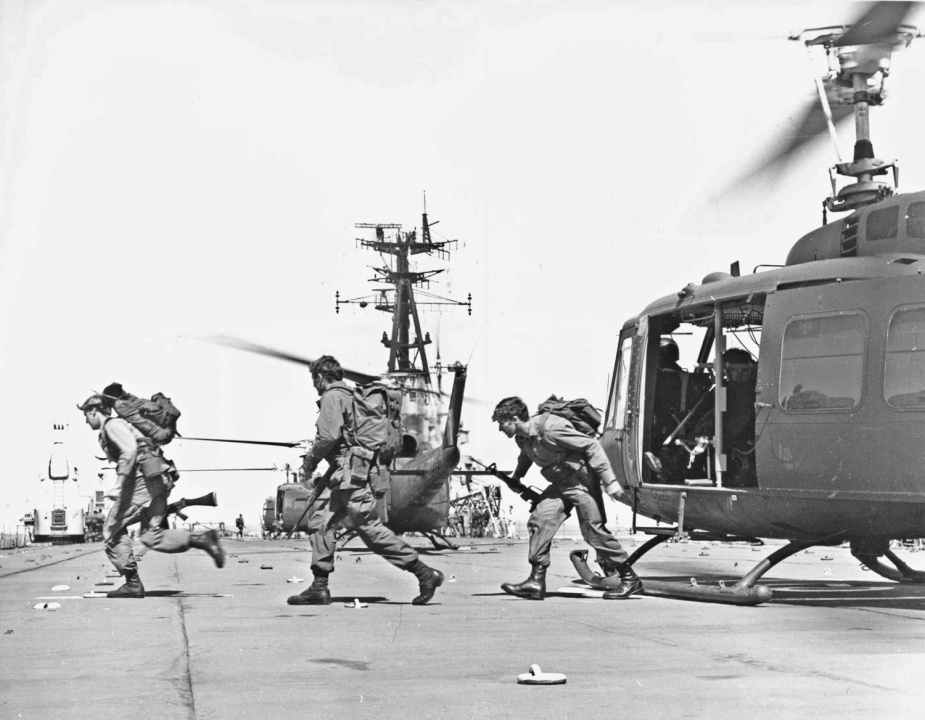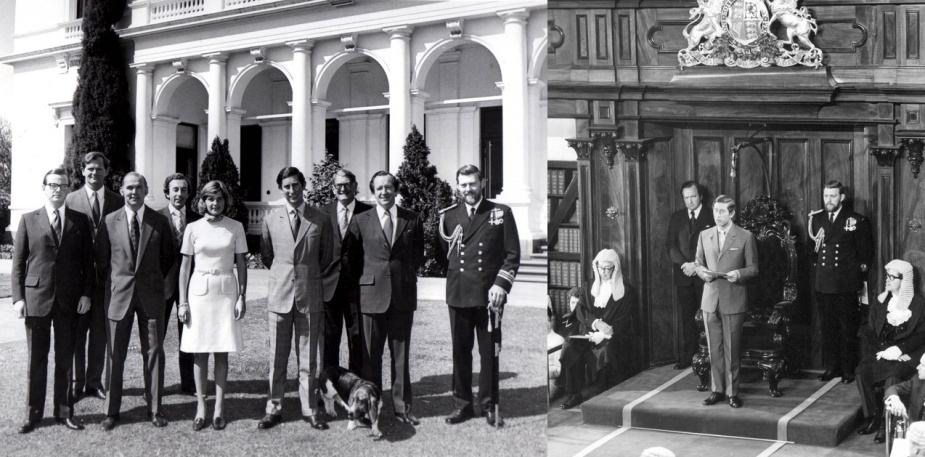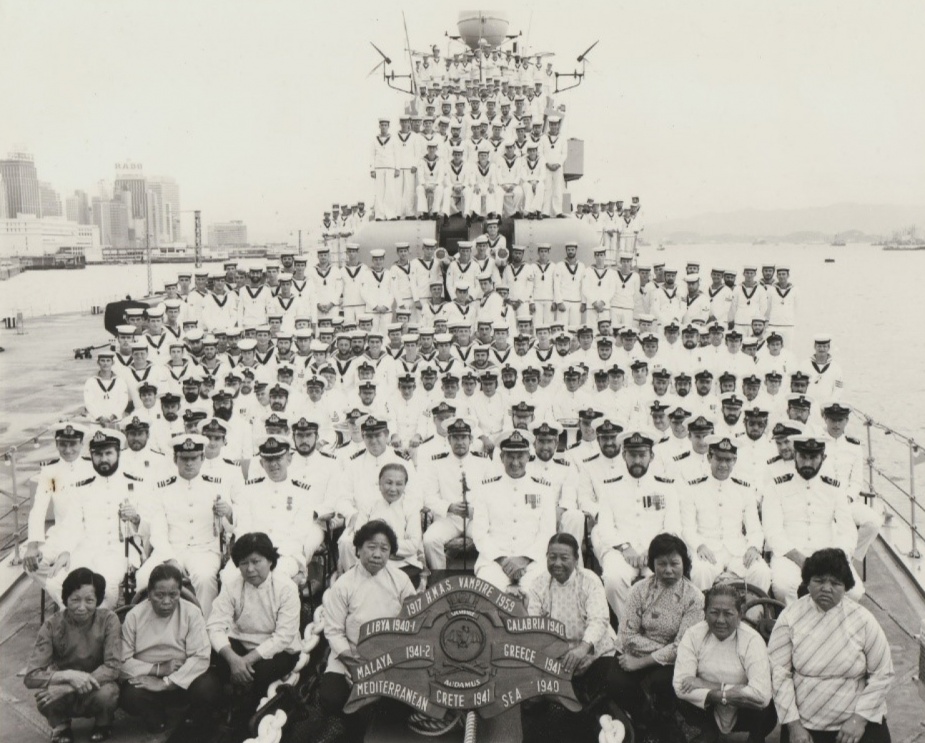Commander Ian ‘Max’ Speedy
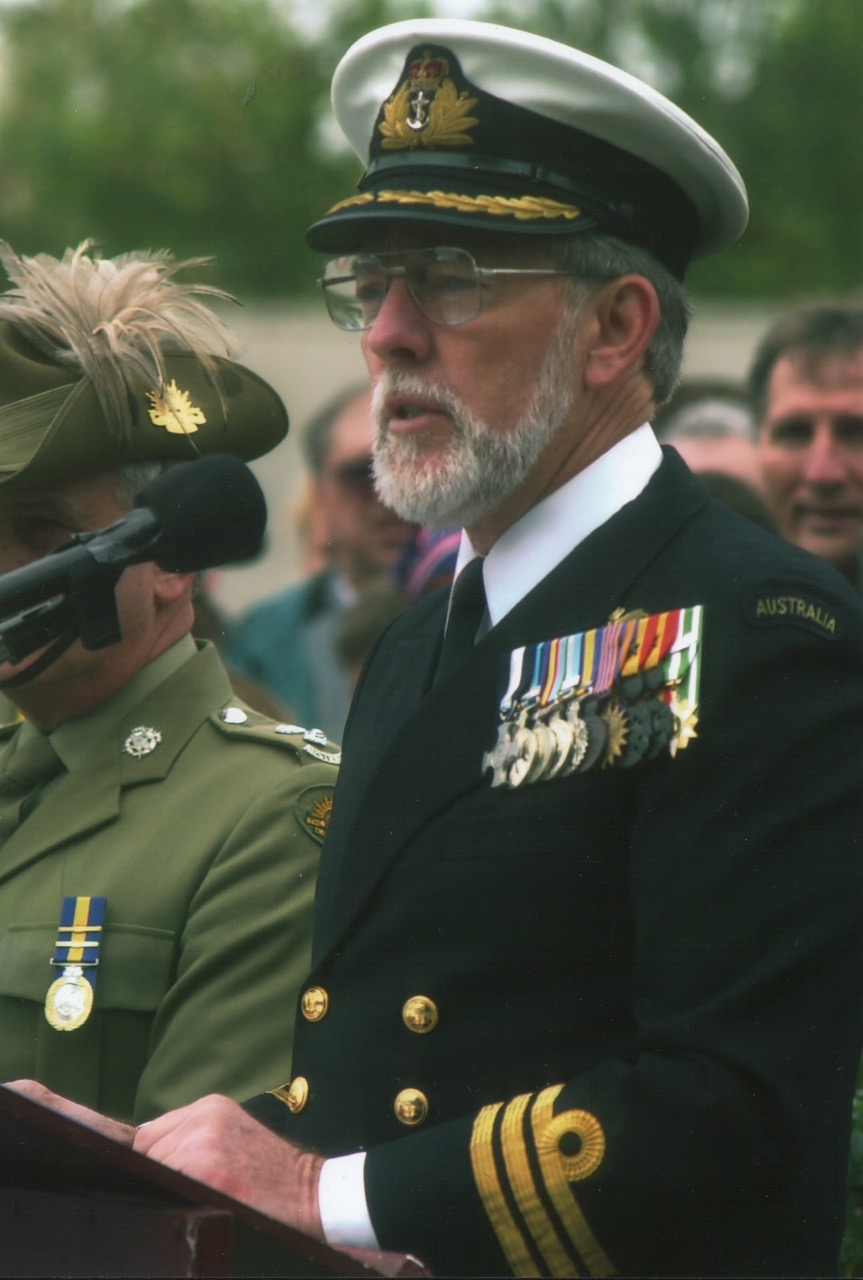
Ian Maxwell (Max) Speedy was born in Levin, New Zealand, in 1944. His father, Ian, had been a WWII fighter pilot in the Royal New Zealand Air Force seeing active service shooting down Japanese aircraft at Guadalcanal. The Speedy family migrated to Australia in 1950 and Max was educated chiefly in and around Brisbane, completing his Senior Year matriculation in 1961 at the Ipswich State High School. A job picking potatoes soon convinced him there were better careers in the offing.
An advertisement in the Courier Mail seeking Observers to fly the Royal Australian Navy’s (RAN) new Westland Wessex 31A anti-submarine helicopters was to catch his eye and although he was unclear about what an observer actually did, the thought of flying was sufficient for him to sign up. It transpired that both he and a school friend, Bob Waldron, were the last two standing following a week of rigorous interviews and medical examinations and on 29 January 1962, they arrived at HMAS Cerberus to begin their training as members of No1 Basic Aircrew Training Course (BATC).
The course of seven Midshipmen were to experience the finery of the Navy’s oldest Wardroom, in which they enjoyed silver table service balanced against long hours spent in class rooms and the tough regime of physical fitness that every recruit endures. To their surprise there was nothing about flying, even though their Course Officer was an Observer himself. Greater emphasis was placed on sailing whalers during the week and 14 foot clinker built dinghies on weekends, if other sporting activities did not intervene. These skills would, however, be put to good use in future postings.
After nine months at Cerberus came the first component of the group’s Observer training conducted in Malta at the HAL FAR Observer School, HMS Falcon. Designated members of No. 65 Basic Observer Course, they flew first class to and from their destination which was to prove an unexpected island paradise.
At HAL FAR, the course members were introduced to the theory, practice and art of flying including how fast it would take to intercept ‘this or that’, or what was necessary to carry out a search in the middle of the Mediterranean before plotting an accurate course for home. There was more serious work too; big hand-held cameras were carried by the trainee observers to photograph any Russian trawler (fishing for SIGINT) that they encountered. Those were the times when serious antagonism and tension existed between the West and Eastern Bloc states and the Cuban Missile Crisis was looming.
All but one of the Australian Midshipmen were to graduate from Hal Far before returning home to take leave, after which they reported to HMAS Albatross, Naval Air Station (NAS) Nowra on 1 February 1963. There the fledgling observers joined 725 Squadron for the serious business of coming to grips with what was at that time a very modern dunking sonar. Meanwhile, the more senior pilots' understanding of aerodynamics was challenged when they found themselves flying the Wessex as they converted from fixed-wing to helicopters. It was new, exciting and very serious business.
For Max and his fellow observers many months were spent at HMAS Watson and its anti-submarine sonar training school. The Russians, Chinese and a growing number of regional neighbours, including Indonesia, all had or were aspiring to develop significant submarine fleets and, against a tense Cold War backdrop, little warning time could be expected should hostilities break out.
Graduating as a fully qualified observer and promoted Acting Sub Lieutenant, Max joined 817 Squadron which commissioned on 18 July 1963. Soon after, the squadron embarked in HMAS Melbourne (II) for Far East Strategic Reserve and SEATO duties in Singapore. This would prove Max’s first operational cruise during which Melbourne and her air group worked closely with units of the Royal Navy.
The year 1964 began quietly enough with the RAN fleet resuming its pattern of working up and exercising off the NSW coast. On the night of 14 February many 817 Squadron personnel were enjoying a grand BBQ prior to embarking in HMAS Melbourne (II) the following day. Unbeknown to them, events were unfolding at sea that would see the destroyer Voyager cut in two by Melbourne and sink during night flying operations. To their host, Mrs Phil Rodgers, fell the unenviable task of interrupting proceedings to alert them to the disaster and the requirement for them to get back to NAS Nowra as soon as possible. Under an air of disbelief they arrived at Albatross to see every light on every runway, building and hangar shining brightly. From then until two days later everyone went into overdrive. For 817 Squadron this involved scouring the seas and coasts in the vain hope of finding survivors. Max was to fly some of the earliest of those sorties. He later recalled:
Only one person that night was winched into a helicopter, most were too terrified of the noise, the rotor downwash and aircraft searchlights! Many more sorties went on scouring the waters and coasts over the next few days with nothing to be found. The soul searching and too many recriminations went on for years.
82 of Voyager’s crew perished as a result of the collision, their loss reverberating throughout the RAN to this day.
817 Squadron was to re-embark in Melbourne in June 1964 for a further SE Asian deployment after the ship had undergone repairs. Later that year in November, Max and Sub Lieutenant Guy Cooper attended the Australian Army’s Jungle Training School at Canungra to undertake escape and evasion training. This course was to later prove useful in both of the aviator’s careers.
In 1965 Max’s career would take another turn when he, Sub Lieutenant David Cronin and Sub Lieutenant Guy Cooper were posted to No.5 Fixed Wing All Weather Night Fighter Operational Flying School (OFS) to undertake Sea Venom conversion training.
The OFS training began in a converted Dakota 802 that was equipped with two Sea Venom radar sets facing rearwards while a Gannet was used as a target aircraft. Max takes up the story:
Looking through a hood into the radar set and watching the blip go to the left, it was all too often unconsciously translated to the Gannet going right. The lumbering flying class room did not respond quickly and the pilot, up front with a good view of proceedings, would abuse everyone mightily as he had to do as he was told, knowing it was dreadfully wrong.
Both Max and Dave Cronin passed their OFS in September 1965 after which Max was teamed up with Sub Lieutenant Barrie Daly and Dave Cronin with Sub Lieutenant Clive Blennerhassett as their respective pilots.
The Sea Venom was the RAN’s answer to fleet protection from the air and four aircraft were usually embarked in Melbourne as 816 Squadron B Flight. Max takes up the story:
The aircraft Observer’s role was to use the radar to find, and lock-on to an approaching aircraft from any angle, and then carry out an intercept path that brought the pilot up to about 150m astern to look up at the fiery tail of the “enemy” - by day or night. The pilot had a collimator that transferred the radar blip to the gun sight. When locked-on and positioned astern, the order “(Navigation) Lights out - Evade!” was given and from that point on it was the duty of the chased aircraft to try to break radar lock. The chasing Observer’s challenge was of course to maintain contact. It was demanding work and not being able to anticipate what the next move might be, one was always behind the game. Aerobatics at night are not easy when done on a radar blip! When it was time to deck land, again with head down, the Observer would call out the airspeed and power settings while the pilot concentrated on the “Meat Ball”. You knew you had arrived when the arrestor wires brought you up with a mighty jolt. We missed one day, bounced very hard, just managing to get over the deck edge before seeing the ship’s anchor flash past, while FlyCo (Flying Control) advised them “Don’t do that again”!
Max was to reflect that if he was to be killed, then he would prefer to do it himself. He had previously applied to become a pilot and his application was eventually accepted in September 1965, subject to him signing on for a further four years. Joining him would be fellow aviators, Lieutenant Barry Diamond, Sub Lieutenant Bob Waldron, Sub Lieutenant RM (Spike) Jones and Sub Lieutenant David Collingridge. Before that took place, however, Max was to again deploy in Melbourne during the first half of 1966 for another SEATO exercise with 816 B Flight before beginning the path towards earning his pilot’s wings.
In July, 1966, Max and David Collingridge attended the Royal Victorian Aero Club where they gained 25 hours flying training preparatory to the full course with the RAAF. After 6½ hours in Chipmunk DH-1s, Max and David made their first powered solo flights with both achieving passes. Together with Midshipman Gary Northern they then proceeded to RAAF Point Cook as members of No. 63 Basic Flying Training Course.
At that time the Navy was preparing to take delivery of A4G Skyhawk fighter bombers to replace the aging Sea Venoms and all three men were keen to fly them. The course began in January 1967 and along with 40 or so other hopefuls from the RAAF and the Australian Army they progressed to flying Winjeels.
From then through to the end of their flying training at RAAF Pearce, Max and David Collingridge were neck and neck at the top of the course. At Point Cook, Max was awarded the Dux and Highest Aggregate Score while David was judged Best Pilot. Their achievements were reversed at RAAF Pearce when David was awarded Dux and Max Best Pilot. A good outcome for the Navy. At the end of his training Max was posted to 723 Squadron to undertake helicopter conversion training while David and Gary Northern joined 724 Squadron for A4 Skyhawk OFS.
In 1964 the hitherto all-male environment at Albatross embraced the arrival of a small number of WRANS officers and around 50 WRANS ratings who were dispersed across the base to fill a range of important jobs. One of the Officers was Third Officer Judy Guy who was the Assistant to the Captain’s Secretary. Max and Judy were to form a friendship and they later married in December 1967 at the HMAS Watson Chapel overlooking the ocean at South Head, Sydney.
Meanwhile events in SE Asia were unfolding that were to have an unexpected influence on Max’s career. On 14 July 1967, the Minister for Defence, Mr Allen Fairhall announced that eight RAN helicopter pilots and supporting staff would join a United States (US) Army helicopter unit in South Vietnam to provide support for allied forces, including the 1st Australian Task Force in Phuoc Tuy province. The new flight, designated the Royal Australian Navy Helicopter Flight Vietnam (RANHFV), was to be integrated with the US Army 135th Assault Helicopter Company (AHC) flying Iroquois helicopters in both the utility and gun-ship configurations. It was also announced that RAN FAA crews would supplement RAAF No. 9 Squadron based at Vung Tau.
The first contingent of pilots, observers, naval aircrewmen and support staff was assigned to 723 Squadron at NAS Nowra in July 1967, under the command of Lieutenant Commander N Ralph, RAN. The flight comprised eight pilots, four observers, four aircrewmen, 24 technical sailors and six support staff (drawn variously from cooks, stewards, writers, medical staff and storemen). They deployed to Vietnam in October 1967.
Against this backdrop, Max joined 723 Squadron in February 1968 to undertake No. 11 Helicopter Conversion Course to certify him to fly Iroquois UH1-C helicopters. On completion of the course, in mid-April, Max then joined 725 Squadron to undertake Wessex 31A conversion training, this time in the front seat as a pilot. He was well into his Wessex conversion when on 5 June, an Iroquois flown by Lieutenant Peter Ward, RAN, a pilot identified as a member of the second flight earmarked to go to Vietnam, crashed at the Beecroft Range killing all aboard. Blissfully unaware that he was to be Ward’s replacement he was first told by his friend Bob Waldron what everyone else seemed to know already. It was confirmed later that day by Commander (AIR) Ron McKenzie.
Max subsequently joined the 2nd Contingent of the RANHFV as its 2IC under the command of Lieutenant Commander Graham (Zork) Rohrsheim. Thereafter flying was to take on greater intensity with little real knowledge of what was in store as all of the 1st Contingent HFV were still in the thick of their deployment. A trip to undertake the Army’s Battle Efficiency Course at Canungra for three weeks was to follow involving minor infantry tactics and training in ambushes, river crossings, forced marches and such other bodily abuses as could be inflicted. More flying at Nowra concluded the work-up that was completed by late August, 1968. By then the 135th AHC/RANHFV had been semi-officially designated the EMUs - ‘Experimental Military Unit’ reflecting the unprecedented RAN-US Army union.
Service in the RANHFV
The 2nd Contingent RANHFV was posted, administratively, to HMAS Penguin and granted one week’s pre-deployment leave before leaving Australia on 9 September 1968. It was to arrive at Camp Blackhorse, many miles north of the Australian Army in Vinh Long Province, on 11 September.
The following day Max was issued a Flak vest, chicken plate (chest body armour) and helmet from one of the Australians leaving that day for home before undertaking a check ride in a UH-1H Iroquois. Small arms familiarisation followed and on 13 September he was to fly the first of 1250 combat hours into countless enemy held landing zones during his year with the 135th AHC.
Following approximately 200 hours as a co-pilot, Max was appointed the 1st Lift Platoon Leader (troop carrying UH1-H Slicks) with the main task of leading a flight of ten troop carrying aircraft in and out of the pick up and landing zones as safely and as expediently as possible. Much later as the Operations Officer he also fulfilled the role as Air Mission Commander, flying a command and control aircraft directing air mobile operations with a Back Seat battalion commander whose troops were in the Slicks below. Those duties were punctuated with additional time flying as ‘Slick Leader’.
Landing zones could, and frequently did, go hot without warning and it was a heavy responsibility being Air Mission Commander or Slick Leader. Usually it was just the Company’s aircraft involved but occasionally the 135th AHC joined up with other Companies and a 20 aircraft assault was common. On one occasion, the 135th was part of an 80 aircraft assault involving most of the 222nd Combat Aviation Battalion’s aircraft. This proved more an experiment than an assault at a time when helicopters were becoming the only way in which soldiers could be delivered into battle.
It was in Vietnam that the “Golden Hour” for a wounded soldier to be flown to a casualty station became the rule. The 135th AHC carried out its own troop resupplies, medevacs, reinforcements and most crucially, picked up their own pilots and aircrew if shot down. It was not until the troops they were supporting called it a day that the EMUs would retire to their base. A short day was 4-5 hours, a busy day was 8-10 hours and the most active engagements on some days anything up to 14 hours flying. A typical day would begin with pre-flight inspections at 0400, followed by breakfast and briefings, and a take off at 0600, it made for very long and arduous flying.
The US Army and the Army of the Republic of Vietnam (ARVN) each sought to recognise the contribution of those engaged in air mobile operations in Vietnam and Max was one of many in the 135th to be awarded multiple US Army Air Medals (12). The ARVN were also to recognise his contribution through the award of two separate Vietnamese Crosses of Gallantry (Bronze Star and Silver Star).
On 4 July 1969 he was awarded ‘honorary’ US Army Aviator’s Wings.
The Royal Australian Navy was to recognise the then Lieutenant Speedy’s exceptional devotion to duty, determination and courageous leadership in action through the award of a Distinguished Service Cross that was presented to him by HM Queen, Elizabeth II at a ceremony in Buckingham Palace.
Altogether four RANHFV contingents, involving 196 Fleet Air Arm personnel, were to serve in Vietnam. Those that did so, saw it as the culmination of their professional naval careers yet there were some in Australia who saw it as a distraction from the Navy’s proper role. Understandably this caused both tension and bitter disappointment among many returned service personnel. Some left the Navy while others buried their feelings. The award of a retrospective Unit Citation for Gallantry to the RANHFV in 2018, did much to heal those wounds. The citation read in part:
The extraordinary gallantry, dedication to duty and astonishing record of the Royal Australian Navy Helicopter Flight Vietnam conducting tasks far removed from the expectations of Naval service, has forever set it apart from other units. The extraordinary acts of gallantry and heroism consistently displayed by the personnel, combined with their loyal devotion to duty were in keeping with the finest traditions of the Royal Australian Navy and the Australian Defence Force
Only six UCGs have been awarded under the Australian Honours and Awards system; four to the Australian Army, one to HMAS Yarra (II) (1942) and the other to the RANHFV. It is a unique and fitting honour.
Following his return from Vietnam, Max was posted to the UK to undertake a helicopter instructor’s course with the RN at HMS Culdrose in Cornwall. His two years with the RN’s 705 Squadron proved both rewarding and cathartic and on returning to Australia in 1972 he re-joined NAS Nowra as an A1 Helicopter Instructor serving in 725 Squadron flying Wessex 31Bs, an upgraded 31A model with more power and a bigger sonar ball dangling off 500 feet of cable. Max was to lament that it needed every bit of the extra power but remained fun to fly.
Although still a Lieutenant, and with little notice, Max was appointed in command of 723 Squadron on 31 October 1972 relieving Lieutenant Commander WS ‘Staff’ Lowe, MBE, RAN, a fellow RANHFV veteran. The last time they had seen one another had been in Vietnam when Max took over a corner of his cabin in the ‘House of Lords’ officers’ quarters at Camp Blackhorse. At that time Lowe was finishing a momentous year as the 135th AHC’s maintenance test pilot. This time Lieutenant Commander Lowe was handing over the baton of 723 Squadron to Max.
In April 1973, 723 Squadron embarked in HMAS Sydney with three aircraft and an Army Battalion to take part in Exercise COLD KOALA at the NZ Army Training Base, Waiouru on New Zealand’s North Island In spite of the cold it was to prove a rewarding time over the 18 days they were away.
Later in 1973 Max took delivery of an ornately carved wooden Battle Honours board on behalf of 723 Squadron carrying the ribbon “Vietnam 1965-1972”. As the RANHFV was a war-raised unit that no longer existed, 723 Squadron was nominated to carry the award on its behalf. Disappointingly there was no ceremony attached to its arrival but it was displayed in the Squadron’s crew room along with other prestigious squadron memorabilia and in the fullness of time its significance came to be appreciated.
In late-1973 the then Lieutenant Commander Speedy was posted to sea in HMAS Parramatta (III) to attain a Bridge Watchkeeping Certificate (BWC). The ship was to spend only a short period of time in Australian waters before steaming, west-about, for a six month South-East Asian deployment. Max was to gain his BWC in late 1974 before being appointed to Fleet Headquarters where he began researching and writing a comprehensive RAN Ports and Facilities Directory. Mid-way through the task he was approached by the then Director of WRANS, Superintendent Barbara McLeod, to see if he was interested in performing the duty of Equerry to HRH Prince Charles during his forthcoming Australian tour in October and November 1974. Accepting the offer, Max was soon in Canberra attached to the PM and Cabinet’s Hospitality Branch where he joined its head, Sir James Scholtens, on a reconnaissance tour of the eastern states in a Fokker 27 Friendship as part of the planning phase.
Prince Charles was undertaking a world tour of which Australia was but one part. It began in Canberra on 12 October 1974 and ended some six weeks later.
Max was to recall that while Equerries at one time held the reins of their sovereign’s horses, this didn’t apply to Prince Charles who clearly enjoyed himself while maintaining a fantastic pace. He proved to be one who was both liked and likeable.
During the visit, the young prince was to open the NSW Parliament, the Siding Spring Anglo-Australian Observatory, a hospital and a Royal Gala Concert in Brisbane, an Opera at the Opera House and the Royal Yacht Club in Hobart. He also spent time riding horses in central Queensland and NSW playing polo and surfing at Coolangatta. While the tour proved to be a whirlwind remembered as a blur, Max was to recall with some satisfaction that it was good while it lasted.
Returning to 817 Squadron in late 1974, hopes of a quiet Christmas were shattered when news was received that Darwin had been flattened by Tropical Cyclone Tracy on Christmas Eve. HMAS Albatross was ordered to ready as many aircraft as possible to fly to Sydney and embark in HMAS Melbourne on Boxing Day. Squadron personnel of all ranks did a phenomenal job readying seven Wessex before boarding buses that took them to Sydney. Melbourne sailed from Sydney on 27 December with most of her crew including a near full complement of 817 Squadron personnel. The ship arrived in Darwin on New Year’s Day 1975, where its crew quickly set about assisting in the recovery from the devastation caused by Cyclone Tracy.
After six weeks conducting humanitarian relief operations in Darwin, Melbourne returned to Sydney to resupply before embarking her entire carrier air group (CAG) and steaming to Hawaii to participate in Exercise RIMPAC 75. The CAG eventually returned to Nowra in April, 1975.
In May 1975 Max was appointed Commanding Officer of 817 Squadron at a time when new Sea King helicopters were being introduced into service. On 9 December 1975 he closed the books on the old 817 Squadron and its Wessex 31Bs, handing over to Commander ES Bell, RAN, and the new 817 Squadron Sea Kings. That day was to be his last flight as a Fleet Air Arm pilot.
There would, however, be one more military flight to be had although it was 37 years distant.
In early 1976 Lieutenant Commander Speedy was posted to the Australian (Army) Staff College joining approximately 80 ADF officers and a small number of foreign officers from India, Pakistan, Indonesia, Singapore and the UK, to commence a demanding year of defence studies. There were many interesting speakers, including Israeli General Moshe Dayan and dozens of others. Two round Australia trips in RAAF Hercules visiting the Pilbara through to Mary Kathleen (handling Yellow Cake Uranium) and many places in-between gave all concerned a sense of the country’s vastness and associated security challenges.
On successfully completing the course Max was posted as the Staff Officer to the Director General of Naval Manpower and Planning, Commodore BH Loxton, RAN, for two years from 1977 to the end of 1978. During that time he became a Peter Mitchell Prize winner with an essay on how the Navy might go about creating a nuclear powered submarine force.
In 1979, his Bridge Watchkeeping qualification was finally put to the test when he was posted as the Executive Officer in HMAS Vampire under the Command of Captain Alan Beaumont, RAN, who was later to become a Chief of the Defence Force.
Max’s appointment in Vampire proved particularly rewarding. The ship deployed from Sydney via Western Australia visiting practically every port from Madras (now Chennai), India, through Sri Lanka, to Singapore, Hong Kong, Japan, Guam, the Philippines, Indonesia before eventually returning home after participating in Exercise KANGAROO 1980. During that time Max kept a standing Morning Watch, while performing his normal duties during the day, an arrangement that proved most rewarding professionally. While the ship is now a museum attraction in Darling Harbour, Sydney, Max was to reflect that “she was the best of her kind and that year’s cruise stands out”.
Following his sea time in Vampire Max sought approval to be the RAN’s first Defence Force Fellow at the Australian National University attending the School of Strategic Studies in the latter half of 1980. There he researched and published a prescient paper entitled “Australia’s Oil and Security, the future fuel requirements of the ADF”. The study examined strategic issues associated with maintaining fuel supplies in Australia during times of military crisis.
In 1981 Max was posted as the Deputy Director Naval Plans reuniting with his former Captain AL Beaumont, RAN. This was to prove another very rewarding year under the tutelage of that fine officer. Promotion to Commander came at that time but with it the question of what to do next?
While his time in many rewarding positions was appreciated and possibly making openings for better things, Max’s family were feeling his absences. The choice of greater family stability without the long times at sea or away came first and so, with some regrets he resigned in April 1982, transferring to the Naval Reserve.
His plan had been to find reasonable employment prior to the break with the Navy but a farm in Gippsland came first making employment critical. That came to pass and Max became a Town Planning and Community Manager in the Shire of Morwell and later in other places. He moved on to become the Shire President of South Gippsland, taking on a number of board positions and was instrumental in the amalgamation of the Victorian Regional Ambulance organisations.
By an odd twist, some knowledge of the hospital and critical care industry was to prove useful when in 2006 a position in the RAN Reserve came up to carry out an examination of the HMAS Cerberus Hospital. A 3-4 month contract followed after which his experience and expertise was called for in other departments at Cerberus. Continuous full time service followed and Max soon found himself back in the ‘rig of the day’ working in Navy Office, Canberra, under (then) Commodore Nigel Coates, RAN. From there it seemed to be a quick step to OIC, Navy Establishments Validation Team in which he gained another five years of insights to a much more modern Navy than the one he had left some 25 years previously. Computers had taken over and Midshipmen of his time were now running the show as Admirals. It was during that time that Max and his former RANHFV CO, Lieutenant Commander ‘Zork’ Rohrsheim, DSC, RAN, (Ret’d) enjoyed the special privilege of joining Max’s son, Nigel, a Major and test pilot in the Australian Army, in a Vietnam era UH1-H Huey for the Adelaide, Vietnam Veterans’ Day fly past. It was to prove a proud moment for father and son.
On reflection Commander Speedy recounts that the first 20 or so Navy and Fleet Air Arm years were certainly the formative ones. As a green Midshipman, he had joined a gentlemanly Navy in 1962 intent on being just like the British. When he left the RAN in 2010 for the last time, he realised it was vastly more professional, infinitely more assured of itself, and finding excellence in its men and women as equals ashore and afloat.
Since 2013, Commander Speedy has been a regular presenter to the Shipp Division of Recruits at HMAS Cerberus. As someone who knew Leading Aircrewman Noel Shipp and who had flown with him he has been well placed to recount how as a member of the 2nd Contingent RANHFV was killed in action on 31 August 1969. In Shipp’s last moments of life he was to display all the qualities of Honour, Honesty, Loyalty, Integrity and Courage.
In retirement Max and his long-time friend and fellow RANHFV veteran Captain Robert Ray, MBE, RAN, researched and wrote an absorbing first-hand account of the RANHFV’s operations during the Vietnam War entitled ‘A Bloody Job Well Done’.
Max and his wife Judy still farm their 170 acre property in South Gippsland. He grows grapes, makes his own wines and for recreation flies gliders.

